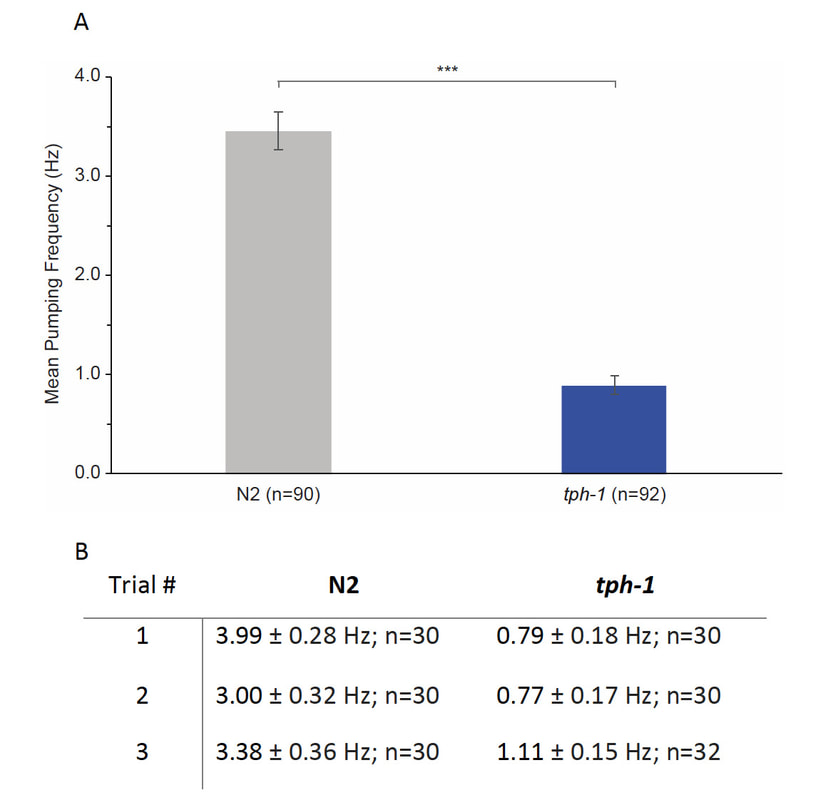Description
In Caenorhabditis elegans, serotonin (5-HT) activates and controls pharyngeal pumping in response to food (Horvitz et al., 1982; Sze et al., 2000; Song and Avery 2012). Tryptophan hydroxylase, the enzyme required for serotonin biosynthesis, is encoded by the gene tph-1. Worms with a tph-1 deletion mutation exhibit phenotypes associated with a lack of serotonin-signaling, including reduced pharyngeal pumping (Sze et al., 2000; Avery and Horvitz 1990; Song and Avery 2012). We used a microfluidic electropharyngeogram (EPG) recording platform (NemaMetrix) and associated software (NemAnalysis) to measure pharyngeal pumping in C. elegans tph-1 mutants in the presence of bacterial food (100 mg/ml E. coli OP50 in M9 buffer), following a 2-hr fasting period. Prior research has shown that a fasting period (e.g., 2-4-hr) induces elevated feeding rates for worms upon re-introduction to bacterial food (Lemieux and Ashrafi 2015). We chose to measure pharyngeal pumping during this elevated feeding phase due to our hypothesis that tph-1 animals would exhibit lower pumping rates than control worms. Pumping was recorded for 2-minute durations over three independent trials (total N2 n = 90; tph-1 n = 92). C. elegans tph-1 mutants exhibited significantly lower pharyngeal pumping rates than N2 control animals (A, N2 = 3.46 ± 0.19 Hz; tph-1 = 0.89 ± 0.10 Hz; mean ± SEM; *** p < 0.0001, 2-tailed students t-test). Pumping frequency data were pooled in A; see B for a comparison of each experimental trial.
References
Funding
Oregon Nanoscience and Microtechnologies Institute (ONAMI) and NemaMetrix, Inc.
Reviewed By
Veena PrahladHistory
Received: December 12, 2016Accepted: January 27, 2017
Published: February 8, 2017
Copyright
© 2017 by the authors. This is an open-access article distributed under the terms of the Creative Commons Attribution 4.0 International (CC BY 4.0) License, which permits unrestricted use, distribution, and reproduction in any medium, provided the original author and source are credited.Citation
Hiebert, T; Chicas-Cruz, A; McCormick, K (2017). Reduced pharyngeal pumping rates observed in tph-1 mutants using microfluidic electropharyngeogram (EPG) recordings. microPublication Biology. 10.17912/W2CC7Z.Download: RIS BibTeX




